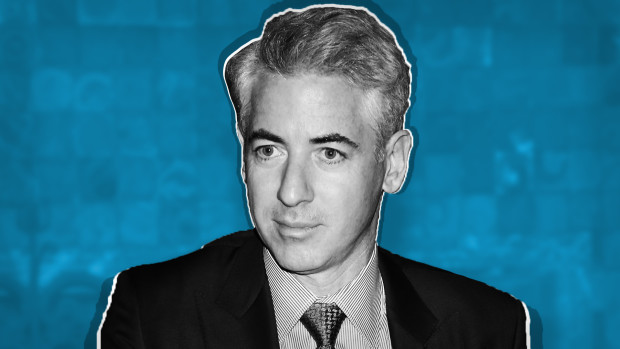
Pershing Square's Bill Ackman isn't shy about making controversial bets. The long-time hedge fund manager's questioning of mortgage-backed collateral debt obligations led to him shorting Municipal Bond Insurance Association Inc. before the Great Recession, profiting him handsomely.
He also became a household name when he shorted Herbalife, calling it a pyramid scheme, a trade that didn't pan out.
More recently, he made billions when he bought protection against his stocks before stocks swooned because of COVID in 2020, then billions more when he switched gears, buying stocks at significantly depressed prices during the crisis.
Ackman's billionaire status and record of big bets make his trades worth tracking. His latest is likely to raise some eyebrows.
Bill Ackman Takes Aim At Government Bonds
Ackman disclosed on X, formerly Twitter, on August 3 that his latest trade is short 30-year Treasury bonds.
The hedge fund manager says that he made the bearish bet "in size" for many reasons, including the likelihood higher spending will require the government to issue increasingly more debt.
"With $32 trillion of debt and large deficits as far as the eye can see and higher refi rates, an increasing supply of T [Treasuries] is assured. When you couple new issuance with QT, it is hard to imagine how the market absorbs such a large increase in supply without materially higher rates," wrote Ackman.
More From Wall Street Analysts:
- Hedge Fund Manager Doug Kass Predicted This Year's Rally: Here's What He Thinks About the Rest of 2023
- Analyst That Correctly Called the S&P 500's Rally Has a Warning About What's Next For Stocks
- Analyst Who Called the Bull Market in April Just Added to His Best Stocks List
The Federal Reserve is selling Treasuries from its balance sheet to fight inflation. This quantitative tightening is increasing the supply of Treasuries while the government needs to issue more bonds to cover its obligations.
This one-two punch has Ackman betting long bond yields are heading higher. If so, shorting Treasury bonds will pay off because bond prices move inversely to yields.
Ackman also believes inflation will remain stubbornly higher than the Fed's 2% target.
"I have been surprised how low US long-term rates have remained in light of structural changes that are likely to lead to higher levels of long-term inflation, including de-globalization, higher defense costs, the energy transition, growing entitlements, and the greater bargaining power of workers. As a result, I would be very surprised if we don’t find ourselves in a world with persistent ~3% inflation," wrote Ackman.
Inflation has retreated substantially from its 9% pace in June 2022 to 3%, but additional deceleration may be tougher to wrangle given the headwinds Ackman lists.
If so, the Fed's "higher interest rates for longer" mantra may mean yields remain elevated longer than some believe. The CME's FedWatch tool predicts the Federal Reserve will switch gears and cut rates in the first half of 2024.
Global policy changes may also benefit Ackman's short position.
Japan had been controlling its yield curve by buying when Japanese bond yields approached 0.50%. It recently shifted that target to 1%, making Japanese bonds arguably more attractive relative to Treasuries.
Given Japan is the largest foreign owner of U.S. debt, any change in demand for Treasuries could be a tailwind for higher yields. The country owns $1.1 trillion of U.S. debt, according to Statista.
How high does Ackman think yields may go?
"Long-term inflation is 3% instead of 2%, and history holds, then we could see the 30-year T yield = 3% + 0.5% (the real rate) + 2% (term premium) or 5.5%, and it can happen soon. There are many times in history where the bond market reprices the long end of the curve in a matter of weeks, and this seems like one of those times," wrote Ackman.
The 30-year yield was 4.3% on August 3, up from below 4% in mid-July. The iShares 20+ Year Treasury Bond ETF (TLT) -) has fallen nearly 8% since July 19.
To profit from potentially higher rates, Ackman is using options rather than shorting the 30-year Treasury Bond directly.
"We implement these hedges by purchasing options rather than shorting bonds outright. This makes it easier to sleep at night as it makes your downside finite. Our sleep-at-night test’ is a critical risk management tool," wrote Ackman.
Get investment guidance from trusted portfolio managers without the management fees. Sign up for Action Alerts PLUS now.







